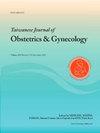Menopause part I: Vasomotor symptoms (I)
IF 2
4区 医学
Q2 OBSTETRICS & GYNECOLOGY
引用次数: 0
Abstract
Menopause, an aged process due to loss of permanent ovarian function (mainly decreased production of estrogen) without another pathological or physiological cause becomes one of the most health issues in the world. Vasomotor symptoms (VMS) is a hallmark of menopause, occurring in up to 80 % of women experiencing and persisting for over seven years with significant negative impacts on physical, psychological, social, and overall wellbeing. Conventionally, menopause hormone therapy (MHT) is considered the most effective therapeutic opinion for many years based on the fact as “deficiency of estrogen”; however, the ratio of benefits and risk is highly debated and always in concern. Therefore, the non-MHT agent focusing the underlying pathophysiology of VMS, such as hypothalamus-pituitary-ovary axis is becoming attractive. Based on this concept, the hypothalamus neural construct containing Kisspeptin (Kp) neurons in median pre-optic area (POA) or Kp-neurokinin B (NKB)-dynorphin (DYN) neurons (KNDy neurons) in the infundibular nucleus is identified as the thermoregulatory circultry to involve the pathophysiology of normal reproduction and menopause-associated VMS. The neurokinin 3 receptor (NK3R) antagonists applied to VMS are an enthusiasm with a big success. Fezolinetant is one of the best breakthroughs. Recent three randomized clinical trials (RCTs), including SKYLIGHT 1,2, and 4 confirmed the safety and efficacy for treating moderate-to-severe VMS women. By contrast, another MONGLIGHT RCTs for East Asia population seemed to controversial therapeutic effect for VMS treatment, but there is no doubt that safety issue is also satisfied, contributing to the need of more RCTs to validate its efficacy in diverse population. The current review will summary the recent advance of this new landscape in the management of women with moderate-to-severe VMS and particularly focus on the fezolinetant product.
更年期第一部分:血管舒缩症状(一)
绝经是一种由于卵巢永久性功能丧失(主要是雌激素分泌减少)而没有其他病理或生理原因的衰老过程,已成为世界上最健康的问题之一。血管舒缩症状(VMS)是更年期的标志,高达80%的女性经历并持续7年以上,对身体、心理、社会和整体健康产生显著的负面影响。传统上,更年期激素治疗(MHT)被认为是多年来最有效的治疗意见,基于“雌激素缺乏”这一事实;然而,收益和风险的比例一直备受争议和关注。因此,关注VMS潜在病理生理的非mht药物,如下丘脑-垂体-卵巢轴,正变得越来越有吸引力。基于这一概念,下丘脑中视前区(POA)含有Kisspeptin (Kp)神经元或基底核中含有Kp-neurokinin B (NKB)-dynorphin (KNDy)神经元(KNDy神经元)的神经结构被确定为体温调节循环,参与正常生殖和绝经相关VMS的病理生理。神经激肽3受体(NK3R)拮抗剂应用于VMS是一个巨大的成功。Fezolinetant是最好的突破之一。最近的三个随机临床试验(RCTs),包括天窗1、2和4,证实了治疗中重度VMS妇女的安全性和有效性。相比之下,另一项针对东亚人群的MONGLIGHT随机对照试验似乎对VMS治疗效果存在争议,但毫无疑问,安全性问题也得到了满足,因此需要更多的随机对照试验来验证其在不同人群中的疗效。目前的综述将总结这一新领域在中重度VMS妇女管理方面的最新进展,并特别关注fezolinetant产品。
本文章由计算机程序翻译,如有差异,请以英文原文为准。
求助全文
约1分钟内获得全文
求助全文
来源期刊

Taiwanese Journal of Obstetrics & Gynecology
OBSTETRICS & GYNECOLOGY-
CiteScore
3.60
自引率
23.80%
发文量
207
审稿时长
4-8 weeks
期刊介绍:
Taiwanese Journal of Obstetrics and Gynecology is a peer-reviewed journal and open access publishing editorials, reviews, original articles, short communications, case reports, research letters, correspondence and letters to the editor in the field of obstetrics and gynecology.
The aims of the journal are to:
1.Publish cutting-edge, innovative and topical research that addresses screening, diagnosis, management and care in women''s health
2.Deliver evidence-based information
3.Promote the sharing of clinical experience
4.Address women-related health promotion
The journal provides comprehensive coverage of topics in obstetrics & gynecology and women''s health including maternal-fetal medicine, reproductive endocrinology/infertility, and gynecologic oncology. Taiwan Association of Obstetrics and Gynecology.
 求助内容:
求助内容: 应助结果提醒方式:
应助结果提醒方式:


